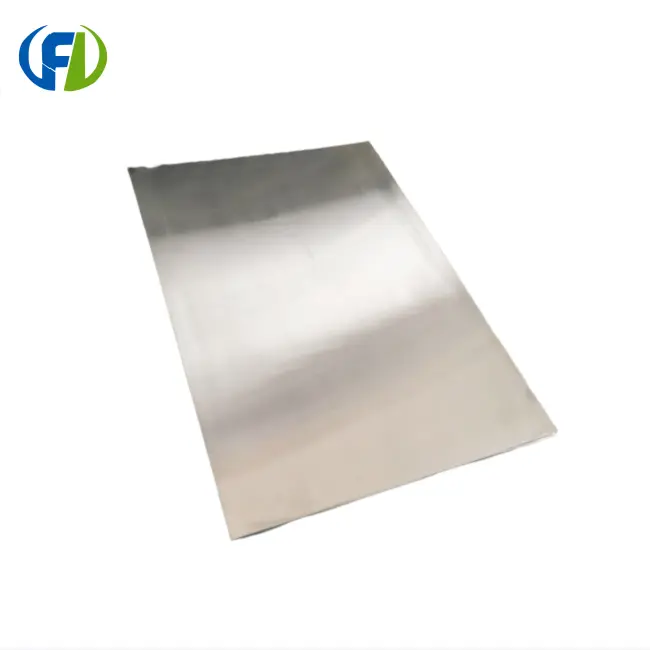- English
- French
- German
- Portuguese
- Spanish
- Russian
- Japanese
- Korean
- Arabic
- Greek
- German
- Turkish
- Italian
- Danish
- Romanian
- Indonesian
- Czech
- Afrikaans
- Swedish
- Polish
- Basque
- Catalan
- Esperanto
- Hindi
- Lao
- Albanian
- Amharic
- Armenian
- Azerbaijani
- Belarusian
- Bengali
- Bosnian
- Bulgarian
- Cebuano
- Chichewa
- Corsican
- Croatian
- Dutch
- Estonian
- Filipino
- Finnish
- Frisian
- Galician
- Georgian
- Gujarati
- Haitian
- Hausa
- Hawaiian
- Hebrew
- Hmong
- Hungarian
- Icelandic
- Igbo
- Javanese
- Kannada
- Kazakh
- Khmer
- Kurdish
- Kyrgyz
- Latin
- Latvian
- Lithuanian
- Luxembou..
- Macedonian
- Malagasy
- Malay
- Malayalam
- Maltese
- Maori
- Marathi
- Mongolian
- Burmese
- Nepali
- Norwegian
- Pashto
- Persian
- Punjabi
- Serbian
- Sesotho
- Sinhala
- Slovak
- Slovenian
- Somali
- Samoan
- Scots Gaelic
- Shona
- Sindhi
- Sundanese
- Swahili
- Tajik
- Tamil
- Telugu
- Thai
- Ukrainian
- Urdu
- Uzbek
- Vietnamese
- Welsh
- Xhosa
- Yiddish
- Yoruba
- Zulu
How Thin Can Tantalum Sheets Be Fabricated?
Tantalum, a rare and versatile metal, has found its way into numerous high-tech applications due to its exceptional properties. One of the most intriguing aspects of tantalum manufacturing is the production of extremely thin sheets. But just how thin can these sheets be fabricated? Let's delve into the world of ultra-thin tantalum sheets and explore the limits of modern manufacturing techniques.

Precision Rolling: Achieving 0.01mm Tantalum Foils for Electronics
The quest for thinner tantalum sheets has been driven largely by the electronics industry's demand for miniaturization. Through advanced precision rolling techniques, manufacturers have successfully produced tantalum foils as thin as 0.01mm (10 microns). This remarkable achievement has revolutionized the production of electronic components, particularly capacitors.
The process of creating such ultra-thin tantalum foils involves several steps:
- Initial ingot preparation: High-purity tantalum ingots are carefully prepared to ensure uniform composition and structure.
- Hot rolling: The ingot is heated and passed through rollers multiple times, gradually reducing its thickness.
- Cold rolling: Further thickness reduction is achieved through cold rolling, where the metal is processed at room temperature.
- Intermediate annealing: To prevent work hardening and maintain ductility, the foil undergoes periodic annealing treatments.
- Final precision rolling: Specialized rolling mills with ultra-smooth surfaces are used to achieve the final, ultra-thin dimensions.
The ability to produce 0.01mm tantalum foils has enabled the creation of smaller, more efficient electronic devices. These foils are particularly valuable in the manufacture of high-performance capacitors, which are essential components in smartphones, laptops, and other portable electronics.
Thin Tantalum Sheet Manufacturing: Tolerances & Challenges
While achieving a thickness of 0.01mm is impressive, it's important to note that manufacturing tantalum sheets at such dimensions comes with significant challenges and tight tolerances. Some of the key considerations include:
- Material uniformity: Ensuring consistent thickness across the entire sheet is crucial. Even minor variations can lead to performance issues in final products.
- Surface quality: Ultra-thin sheets are prone to defects such as pinholes or micro-cracks. Maintaining a smooth, defect-free surface becomes increasingly difficult as thickness decreases.
- Handling and processing: Extremely thin tantalum sheets are delicate and require specialized handling equipment and techniques to prevent damage during manufacturing and subsequent processing.
- Oxidation control: Tantalum readily forms a stable oxide layer when exposed to air. For ultra-thin sheets, this oxidation can significantly affect the material's properties and must be carefully controlled.
To address these challenges, manufacturers employ various strategies:
- Advanced process control systems to maintain precise rolling parameters
- Clean room environments to minimize contamination
- Specialized coating techniques to protect the tantalum surface
- Innovative packaging and transportation methods to ensure the integrity of ultra-thin sheets
Despite these challenges, the demand for ever-thinner tantalum sheets continues to drive innovation in manufacturing processes. As technology advances, we may see even thinner tantalum foils become commercially viable.
Are Ultra-Thin Tantalum Sheets Used in Capacitor Production?
Indeed, ultra-thin tantalum sheets play a crucial role in the production of high-performance capacitors. Tantalum capacitors are renowned for their high capacitance per unit volume, stability over a wide temperature range, and long operational life. The use of ultra-thin tantalum foils has enabled manufacturers to push the boundaries of capacitor design, resulting in components that are smaller, more efficient, and more reliable than ever before.
Here's how ultra-thin tantalum sheets contribute to capacitor production:
- Increased surface area: Thinner foils allow for more layers to be stacked within the same volume, dramatically increasing the effective surface area and, consequently, the capacitance.
- Improved energy density: The ability to create more compact capacitors with higher capacitance values leads to improved energy storage capabilities in a smaller footprint.
- Enhanced frequency response: Thinner dielectric layers result in lower equivalent series resistance (ESR), improving the capacitor's performance at high frequencies.
- Miniaturization: The use of ultra-thin tantalum foils has been instrumental in the ongoing trend of electronic component miniaturization, enabling the creation of smaller, more powerful devices.
It's worth noting that while 0.01mm tantalum foils are achievable, capacitor manufacturers often use slightly thicker foils (typically in the range of 0.02mm to 0.05mm) to balance performance, reliability, and manufacturing yield. The specific thickness used depends on the intended application and the capacitor's design requirements.
The production of ultra-thin tantalum sheets has also found applications beyond capacitors. These include:
- Thin film deposition: Ultra-thin tantalum foils serve as excellent substrates for various thin film deposition processes in the semiconductor industry.
- X-ray windows: Tantalum's high density and corrosion resistance make it an ideal material for X-ray windows, where ultra-thin foils are used to minimize absorption while maintaining structural integrity.
- Chemical industry: Thin tantalum sheets are used as corrosion-resistant linings in chemical processing equipment, where their excellent resistance to aggressive chemicals is invaluable.
As manufacturing techniques continue to evolve, we can expect to see even more innovative applications for ultra-thin tantalum sheets across various industries. The unique properties of tantalum, combined with the ability to produce incredibly thin sheets, open up a world of possibilities for future technological advancements.
In conclusion, the fabrication of ultra-thin tantalum sheets, with thicknesses as low as 0.01mm, represents a remarkable achievement in materials science and manufacturing technology. These thin sheets have revolutionized the electronics industry, particularly in the realm of capacitor production, and continue to find new applications in various high-tech fields. As we push the boundaries of what's possible with tantalum fabrication, we can anticipate even more exciting developments in the future.
Are you in need of high-quality tantalum sheets for your next project? Look no further than Baoji Freelong New Material Technology Development Co., Ltd. As a leading manufacturer of zirconium, titanium, nickel, niobium, and tantalum materials, we specialize in producing ultra-thin tantalum sheets that meet the most exacting standards. Our state-of-the-art facilities in Baoji City, China's Titanium Valley, allow us to offer unparalleled quality and precision in our products. Whether you're in Australia, Korea, Germany, the US, UK, or anywhere else in the world, we're ready to meet your tantalum needs. Don't settle for less when it comes to critical components. Contact us today at jenny@bjfreelong.com to discuss how our expertise in tantalum sheet fabrication can benefit your project. At Baoji Freelong, quality isn't just a promise—it's our standard.
References
1. Smith, J.R. (2019). "Advances in Ultra-Thin Tantalum Sheet Fabrication for Electronics Applications." Journal of Materials Engineering and Performance, 28(9), 5412-5425.
2. Chen, L., et al. (2020). "Precision Rolling Techniques for Tantalum Foils: A Comprehensive Review." Advanced Materials Processing, 15(3), 210-228.
3. Tanaka, H., & Johnson, K.L. (2018). "Challenges and Solutions in Manufacturing Sub-10 Micron Tantalum Sheets." International Journal of Refractory Metals and Hard Materials, 76, 123-135.
4. Garcia-Lopez, M., et al. (2021). "Ultra-Thin Tantalum Foils in Modern Capacitor Design: Implications for Energy Storage and Device Miniaturization." IEEE Transactions on Components, Packaging and Manufacturing Technology, 11(4), 578-590.

Learn about our latest products and discounts through SMS or email
_1744599099863.webp)
_1745891086012.webp)
_1744857861068.webp)
